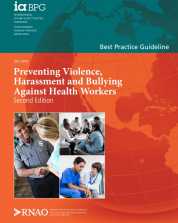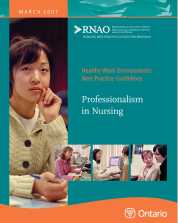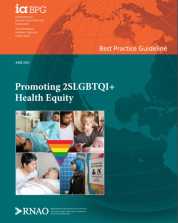The purpose of this best practice guideline (BPG) is to enhance the safety of health service organizations and academic institutions through the adoption of evidence-based practices. Safe and healthy work environments are an enabler for nurses and other health workers to optimize clinical outcomes for those receiving care. Such environments also optimize teaching and learning in academic settings. Specifically, the guideline will address how to recognize, prevent, and manage violence, harassment and bullying in the workplace.
The purpose of this best practice guideline (BPG) is: to identify the concept of professionalism as a guiding tenet that enhances outcomes for nurses, patients, organizations and systems; to define the attributes of professionalism; to identify and discuss the evidence related to each attribute of professionalism; and to provide strategies for success.
The purpose of this best practice guideline (BPG) is to provide nurses and other members of the interprofessional team with evidence-based recommendations on foundational, inclusive care practices for 2SLGBTQI+ people.
The purpose of this best practice guideline (BPG) is to provide nurses and the circle of care with evidence-based recommendations on culturally safe and meaningful ways to support smoking reduction and cessation with Indigenous Peoples of reproductive age, their support networks and communities to improve health and wellness.



